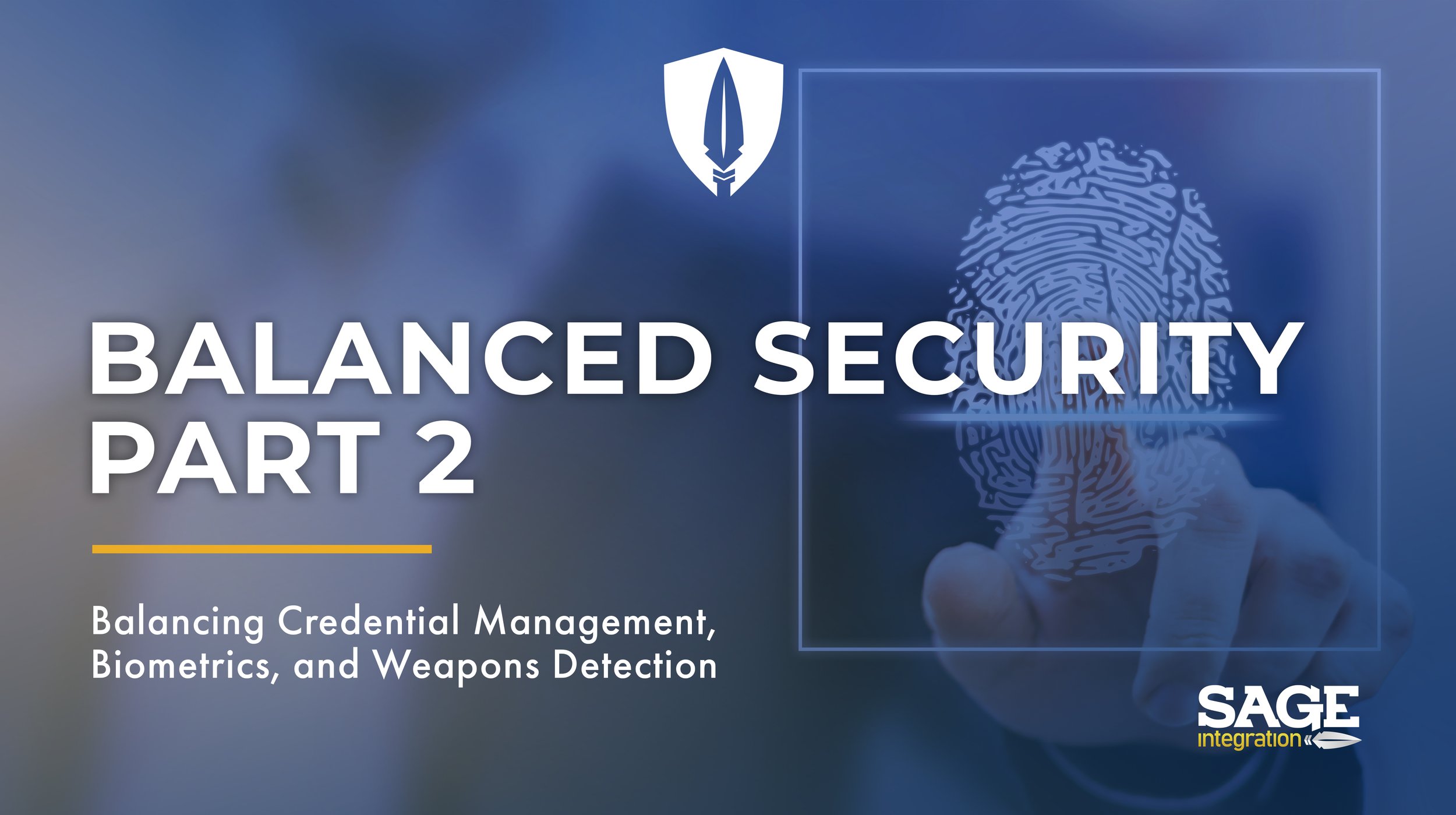Balanced Security: Part 2
Balancing Credential Management, Biometrics, and Weapons Detection
We’re continuing our series about creating balance in your security system by tackling three more common areas of focus: Credential Management, Biometrics, and Weapons Detection.
All three of these areas deal with a type of proactive security, focusing on strategies and technologies that are meant to keep visitors as well as staff safe, by finding the right solutions before someone arrives at your facility, stadium, campus, or building.
The reason we encourage business owners, facility managers, and security chiefs to pay attention these kinds of security elements is that they are highly customizable to your specific needs, as well as elements that allow a high degree of planning. Weapon detection, biometrics, and credential management all give extra layers of protection – strategic checkpoints that someone has to pass in order to gain access to your facility. In that way, each one offers a chance to thwart a bad actor, or to stop a person from entering your building if they’re not actually supposed to be there.
For this piece, we’re going to take a quick look at each of these technologies, talk a bit about what’s available on the market, and how best to utilize these technologies so they work in conjunction with your system at large, while also maximizing their individual efficiency.
One quick note before we start: we think these technologies work best when being overseen by a Security Operations Center. If you don’t have one, or you’re not sure it’s performing as well as it possibly could, then give our piece from last a read. It’s got tips for building a better Security Operations Center and making sure it’s performing as well as it could be.
Okay, on to credential management.
Credential Management
In the same way that you wouldn’t leave a network unguarded, or grant access at a whim, credential management when it comes to physical security is an important deterrent. But while access controls deal with a general category of physical security, credential management specifically relates to new systems for governing touchless, often remote, ways for people to get in and out of your facility, as well as accessing specific parts of it.
When we look at credential management, we help business owners decide how to assign credentials (could be a key code, ID badge, key card, remote access, or mobile access control) and how to keep track of who has them and how they’re used.
One of the main ways we see this be taken advantage of is that, especially with larger organizations, the system for assigning credentials (and potentially revoking them) must be kept closely monitored. One of the reasons we like mobile access controls (which we’ll talk more about when we talk about biometrics) is that it often means that only one person can be paired to the particular credential – since it will require a biometric or a personalized code to use.
Overall, credential management can be easily streamlined by incorporating software that assigns the credentials and keeps track of who has them, allowing the SOC or other overseer to monitor who is using the credentials and, if need be, shut down the credential – keeping someone who has procured a credential illegally from using it.
To read more about credentialing, and specifically mobile credentials, you can read our in-depth piece here.
Biometrics
While biometrics lived a long life in movies and literature, they have made their way to the mainstream with the advent of facial recognition, thumbprint recognition, and other elements made popular by modern cellular phones and other technologies.
Now your fingerprint can unlock a computer, a car, your home, and many other things as well. It’s no wonder that much of the future of access controls is being looked at through the lens of biometrics.
Biometrics provide an extremely personal level of security, in that they generally require a passcode paired with a retinal scan, voice activation, or fingerprint – all things that are hard to procure or fake if you’re a bad actor looking to gain access to a facility or particular area. The best biometrics interact with users quickly and seamlessly. One of our favorite pieces of technology from a year ago was a camera that would not open a door if it recognized you didn’t have a face mask in place. This extra layer of protection ensured that simple forgetfulness didn’t endanger those working or staying in hospitals, elder care facilities, and other high-risk locations.
However, even though we believe biometrics are becoming more and more standard and bringing with them a higher level of security, to be maximally effective, we believe they should be paired with another form of security (password or another kind of credential) to create a two-factor (or more) authentication.
Like many other pieces of technology, biometrics can sometimes be relied upon too heavily, upsetting the balance and resting too much importance on one piece of security tech. Create layers with your security and pair your biometrics with another kind of access control for maximum security.
Weapons Detection
At SAGE Integration, we spend time helping our clients understand that there are two essential philosophies when it comes to security: one deals with detection, and the other deals with deterring. While both are needed to create a truly safe environment, detection gets far more attention than prevention. Shot detection is just such a technology, meant to trigger a response in the moment of attack.
But we try and give clients a longer and wider view of their security, by helping them understand that it’s actually deterrence that has a higher chance of saving lives and keeping innocent employees, visitors, and customers safe rather than detected. For detection to work, the threat has to be already inside or at the door. Deterrence is about creating a system that can spot danger from afar, or even better, convince someone that it’s too hard or not worth the risk to attack a particular place or facility.
We’re spending a minute talking about deter vs detect because again, balanced security implies both. But we see many facilities that have over-invested in detection, and underinvested in deterrence.
That’s why one of our favorite technologies to bring to clients is Weapons Detection – software that can identify a weapon or threat before the person ever gets close to the building or tries to enter. There is also improved weapons detection software that you can utilize in scanners near entrances (Evolv has a highly-developed scanner that does this with incredible accuracy). But we encourage Facilities Managers and SOCs especially, to consider investing some of their funds and resources, especially when upgrading their current systems, to include Weapons Detection in them.
Creating A Balanced System
There is no one piece of technology that translates to immediate and complete safety. That’s why we encourage those looking to secure their facilities to approach security from the posture of balance, introducing just the right elements so that they can all work in combination with one another.
But we also realize that this approach requires expertise – understanding each piece of technology or software and how it will integrate and work best with other elements of your physical security.
That’s why at SAGE, we strive to not only be experts in the way security elements integrate, but we also spend time getting to know our clients, their facilities, their needs, and their goals for their security systems. We want our clients to feel well prepared, secured, and to feel like their system grows and evolves along with them.
The best way to create that growth is by establishing a balanced system and continuing to fine-tune that balance for the long run.
If you’re ready to build a more balanced security system, or just want to bring some to your existing system, then we’d love to meet with you.
You can reach out to us here. We look forward to creating balance for you.

